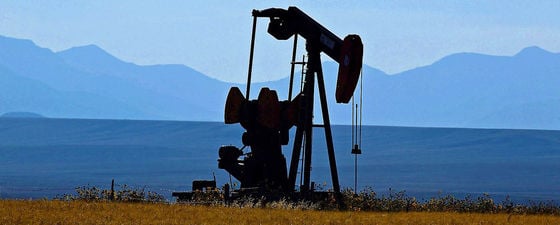Worldwide consumption of petroleum and other liquid fuels will increase from today’s 87 MMbpd to 115 MMbpd in 2040, driven by rapid economic development in the emerging economies of the non-OECD region, with the larger part coming from Asia, says the US Energy Information Administration (EIA). Meanwhile, demand among the more mature economies of the OECD regions remains flat or will decline, according to the IEA’s International Energy Outlook 2013.
 World liquid fuels production from 1990 to 2040 by region and type. (International Energy Outlook 2013)OPEC member nations are expected to provide almost 50% of the growth in world liquids supply up to 2040. OPEC’s additional output is estimated to be 14.1 MMbpd, of which 12.0 MMbpd will come from OPEC countries in the Middle East. The most significant non-OPEC contributors to production growth are Brazil, Canada, the US and Kazakhstan, which together are anticipated to account for 87% of the total increase in non-OPEC liquids supply.
World liquid fuels production from 1990 to 2040 by region and type. (International Energy Outlook 2013)OPEC member nations are expected to provide almost 50% of the growth in world liquids supply up to 2040. OPEC’s additional output is estimated to be 14.1 MMbpd, of which 12.0 MMbpd will come from OPEC countries in the Middle East. The most significant non-OPEC contributors to production growth are Brazil, Canada, the US and Kazakhstan, which together are anticipated to account for 87% of the total increase in non-OPEC liquids supply.
According to the BP Statistical Review of World Energy (2013), the US has shown a steady growth in production since 2009 (7.263 MMbopd), with a 13.9% increase from 2011 to 2012 (8.905 MMbopd). The IEA outlook states that growth in petroleum and other liquid fuels production in the Americas will be particularly strong in years to come, reflecting contributions from deepwater pre-salt resources in Brazil, heavy oil in Canada, and tight oil in the United States. In fact, it is projected that by 2025 liquids production will balance consumption in the Americas. US production of liquid fuels will also surpass that of Russia by 2015.
Some of this will come from US shale oil; the EIA’s assessment of technically recoverable shale oil resources is as high as 23.9 Bbo in the Lower 48. The largest play, the Monterey/Santos, may contribute as much as 15.4 MMbo.
The output of conventional oil from the Middle East has also grown steadily since 2009, reaching 28.27 MMbopd in 2012, in spite of a severe reduction in Iran from 2011 to 2012.




